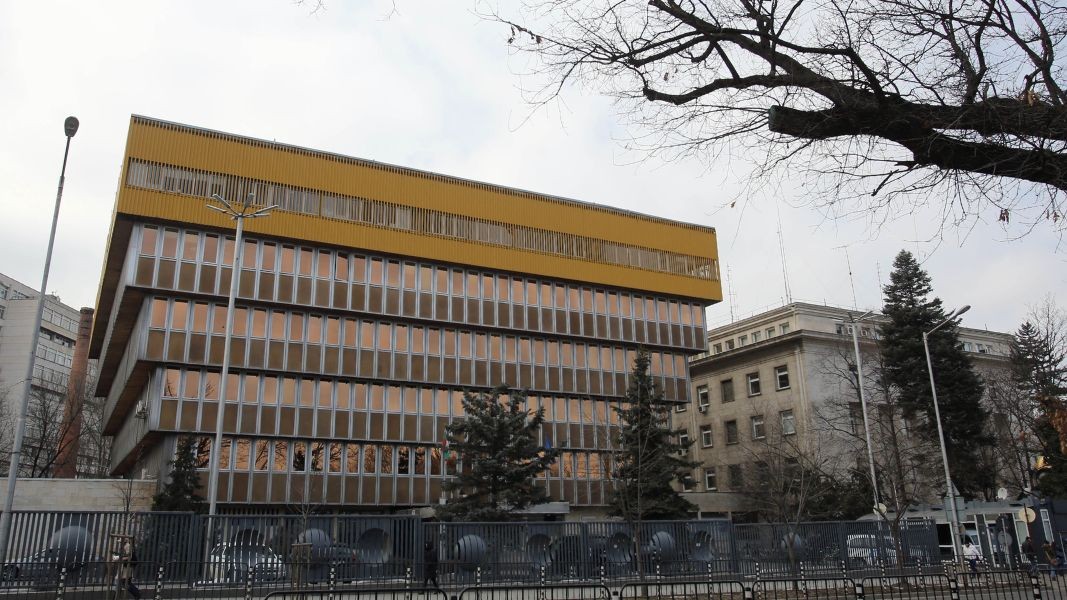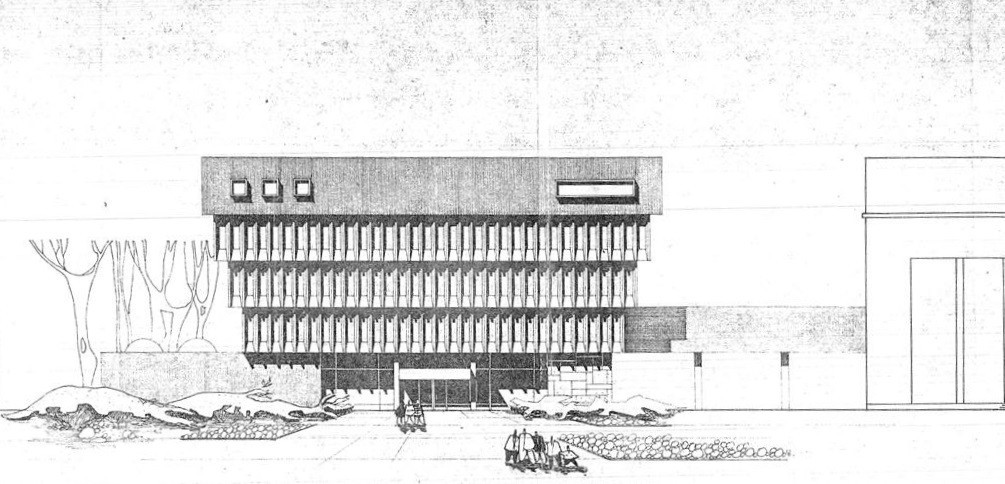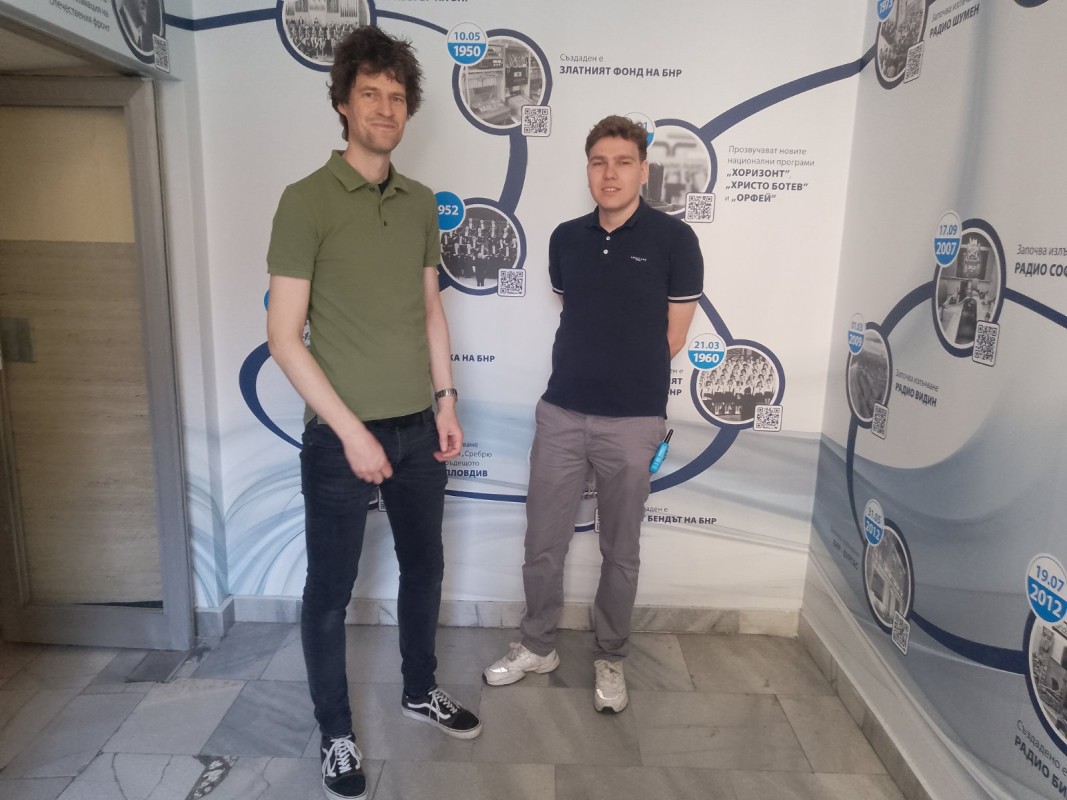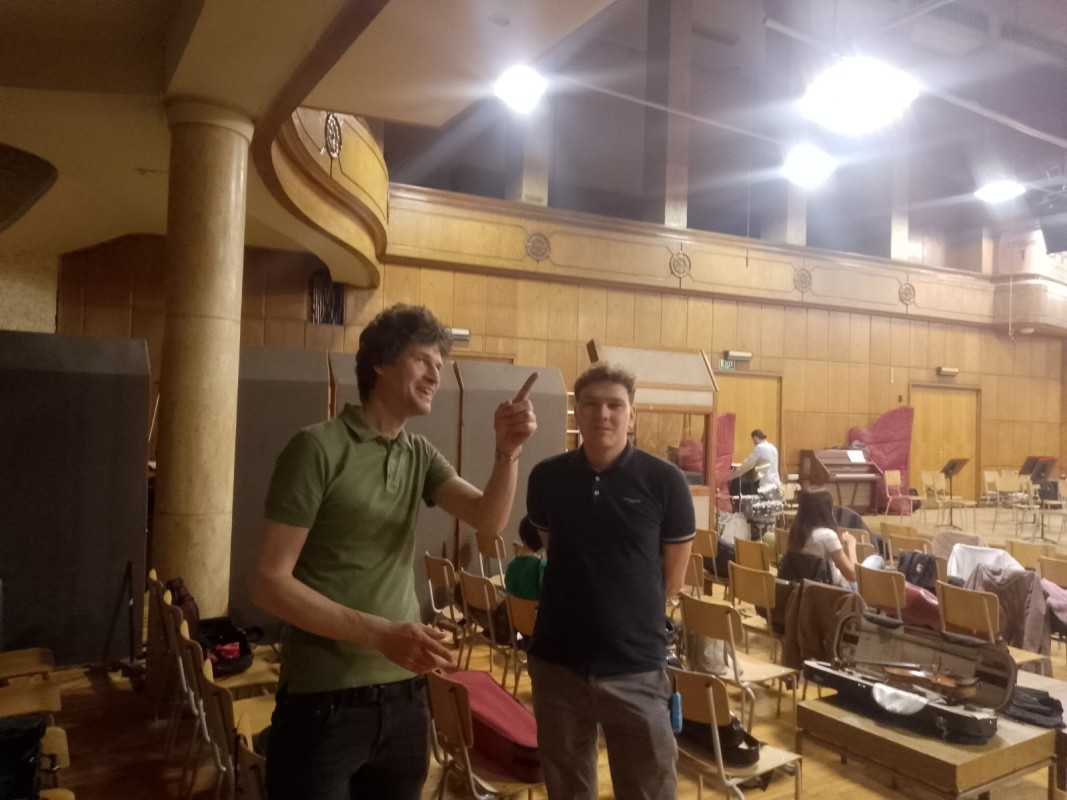This year, 2025, marks the 55th anniversary of the groundbreaking ceremony for the new Bulgarian National Radio building at 4 Dragan Tsankov Street. Construction began on 17 August 1970 on what would become one of Sofia's most famous buildings. It is shaped like an inverted pyramid.
The building was designed by the famous architect Georgi Stoilov, who was also the Mayor of Sofia at the time. He was joined by his younger colleague, Dimitar Andreychin, who played a key role in the project.
Their task was to create a building with a distinctly modern design. The result was the first of its kind in Bulgaria - and one of the few in the world - where each floor is larger and more spacious than the one below, forming the iconic upside-down pyramid.

"I think the image of the building is very fascinating, with its inverted pyramid form, which already intrigued us, says Pieter Algesman, who teaches at the Academy of Architecture in Arnhem. - And the architect, Georgi Stoilov, is famous, so that was a good reason for us. Do you know about him, by the way? Well, we do know his masterpiece—the so-called UFO building—which, unfortunately, we won't get to see.
So this is the second-best thing for us. I can't say we have anything similar in the Netherlands, so for us, every year we do this kind of trip with the students, and we're always looking for something that isn’t Dutch—so the students can learn from other design cultures.

Bulgaria, I think, is a splendid country at the crossroads of so many influences and cultures throughout history. And even now, it's in the heart of a lot of things happening—not only politically, but also architecturally—so of course, that's our main interest."
The professor and his students are particularly interested in the variety of architectural styles and influences here. One of them, Yorick, comments:
"We're actually interested in the clash between East and West. It's clearly visible here, since we can find Ottoman architecture, but also more modern architecture. And then, from the Socialist and Communist periods, there's a lot of architecture left from that time. We don't have that in the West. Especially Brutalism and Modernism are actually very interesting to us."
Yorick doesn't know much about the history of the Bulgarian National Radio building, but he shares his impressions purely from an architectural point of view.

Boriana Kondova is a Bulgarian architect based in the Dutch city of Arnhem. She works with one of the professors in the visiting group, which is why she's their guide to architectural landmarks often overlooked by Western eyes.

"What fascinates them is the atmosphere here — the world we used to live in, which they've never experienced. Take the remnants of communism, for example. For them, it’s something worth exploring, even reimagining conceptually,” she says.
So whether it’s classic or modernist, gleaming or crumbling—and yes, sometimes disappointingly plain—let’s take a moment to appreciate the spaces we inhabit. After all, if visitors can see the value in them… why shouldn't we?
An exhibition of artworks created on stone paper opens today at the Ivan Vazov National Library in Plovdiv, the institution announced. The works are by students from the Tsanko Lavrenov National School of Fine Arts and the National High School of Stage..
She is an educated, young woman passionate about astronomy and physics, but has also devoted her energy and talent to the word. She is part of the family of the Bulgarian National Radio's foreign-languages program Radio Bulgaria and today we proudly..
Nicholas is 15 years old . He is a self-taught artist, but his maturity in creativity and strength of spirit inspire admiration in everyone who has touched his talent. He is a person who fights internal battles and continues in moments when something..
On the eve of one of the brightest Bulgarian holidays - the Day of the National Awakeners of Bulgaria, the Bulgarian Cultural Institute in London is..

+359 2 9336 661
